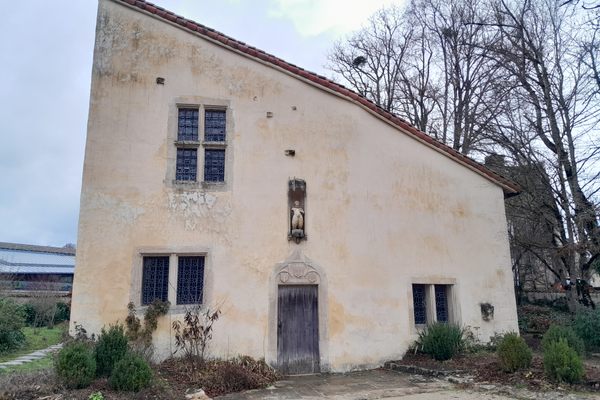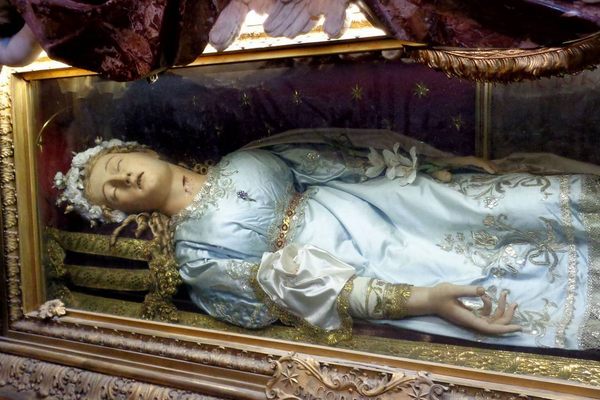About
At about four feet tall, this tiny saint looks genuinely relaxed through the glass of her gilt coffin. Her leathery skin has pulled back from her pearly teeth in the approximation of a smile.
Santa Rosa (Saint Rose), the patron saint of Viterbo, Italy, died in the 13th century at the age of 18 after a short life of devotion, prayer, charity, politics, and miracles. Today, her incorrupt body lies in a church bearing her name.
Santa Rosa had gained attention at a young age for the miracles she is believed to have performed, including bringing people back from the dead. A pious and eloquent girl, she cared for the poor and encouraged the citizens of Viterbo to rise up against the Holy Roman Emperor. For this disruption, she and her parents were driven from the city by the authorities. When the papacy regained control of the region, Santa Rosa returned to Viterbo where she later died.
Several years after her death, Santa Rosa’s body was found to be incorrupt at the site of her burial. Her body had not decayed, which was taken as a sign of her sanctity. Santa Rosa was then moved to her final resting place—what would become the Sanctuary of Santa Rosa—in a procession led by Pope Alexander IV. She was officially canonized in 1457
Even after her death, a variety of miracles are supposed to have occurred at the site of her tomb. Augustus J.C. Hare, a 19th-century travel writer, visited Viterbo during his life. He recounted his conversation with a nun, in which the nun told him that the saint rose from the dead one night when the chapel was on fire, rang the bell, and then died again. According to tale, the chapel burned, as did the saint's fine clothes.
Though Santa Rosa is a lesser-known saint, the inhabitants of Viterbo ardently celebrate their patron every year in the days leading up to her feast day on September 4.
Related Tags
Know Before You Go
Visitors must walk up a very steep hill to reach the Sanctuary of Santa Rosa. Entrance into the church is free and visitors are asked to cover their shoulders and knees. Wraps are provided for those with exposed shoulders and knees.
Community Contributors
Added By
Published
August 9, 2019
Sources
- Viterbo and Tuscia: A New Practical Guide (2017)
- “Viterbo and its Neighbourhood” by Augustus J.C. Hare in Days Near Rome (1887)
- https://en.wikipedia.org/wiki/Rose_of_Viterbo
- https://www.roman-catholic-saints.com/saint-rose-of-viterbo.html
- https://books.google.com/books?id=DXsZmwM59jAC&pg=PA148&lpg=PA148&dq=The+Incorrupt+Body+of+Santa+Rosa+Viterbo&source=bl&ots=fCItk8647K&sig=ACfU3U1amy4py60qoHFm_KGk3Wde7Gw59A&hl=en&sa=X&ved=2ahUKEwjUgIuQquzjAhUon-AKHQaZBMQ4ChDoATABegQIBhAB#v=onepage&q=The%20Incorrupt%20Body%20of%20Santa%20Rosa%20Viterbo&f=false





















